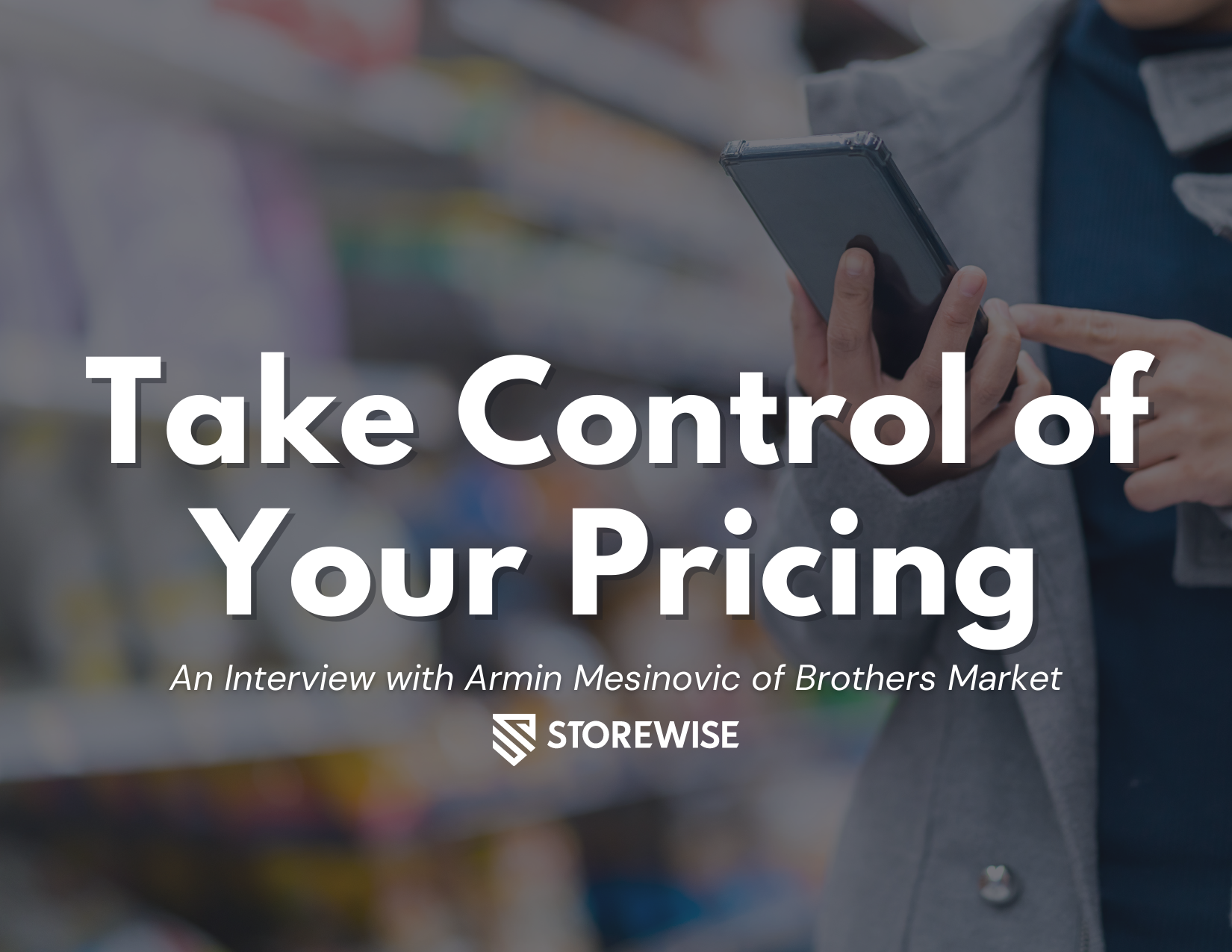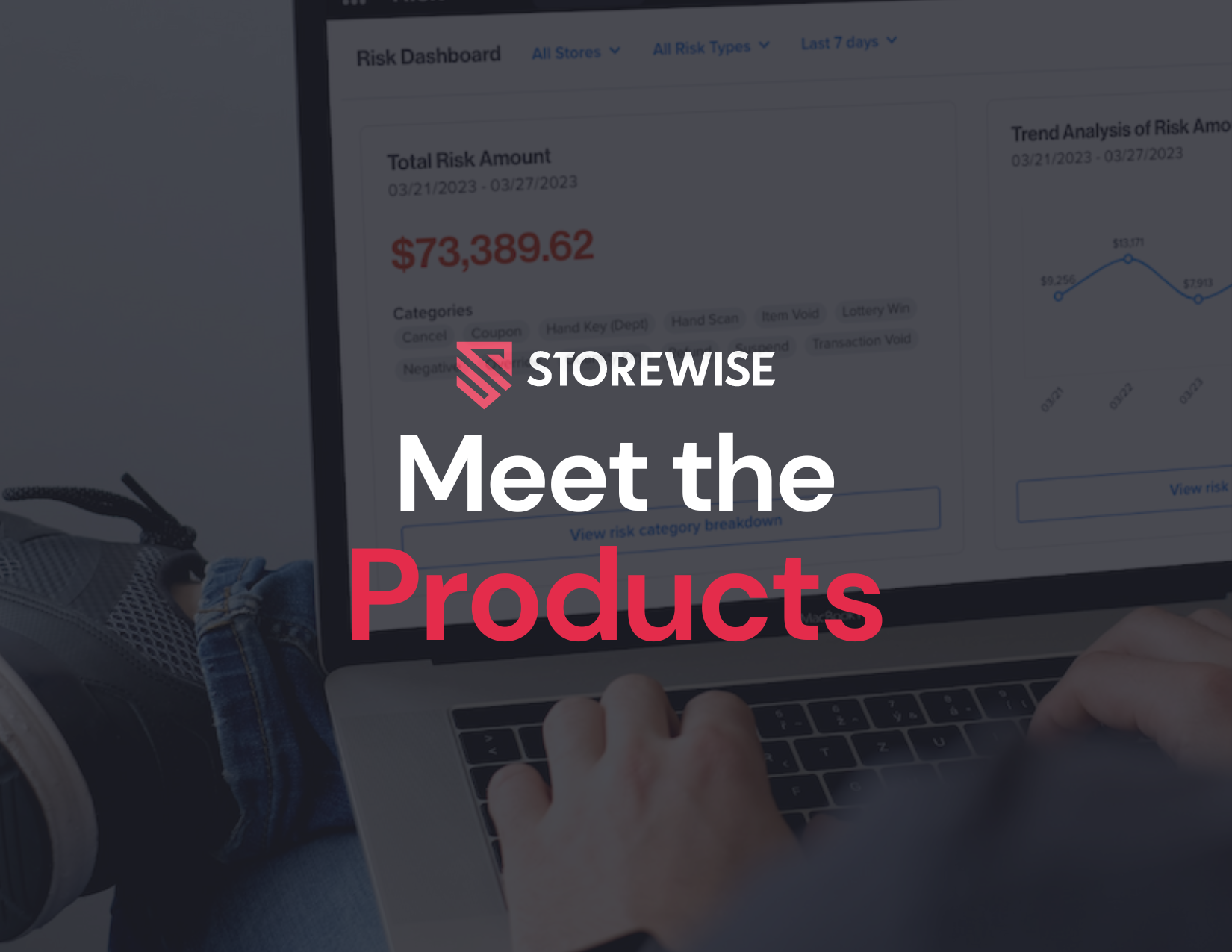Armin Mesinovic, Senior Financial Analyst at Brother’s Markets, is one of the grocery industry leaders defying expectations in managing the historic inflation, inventory and labor challenges facing today’s grocery industry. An early adopter of innovation and technology, Mesinovic grew gross margins by 1.5+% through strategic price management tools.
Below, Mesinovic shares his history, approach and recommendations:
Q: Can you tell me about your history in the industry?
AM: The grocery industry is the best kept secret for younger demographics. People early in their career can grow, there’s a ton of action, and it’s a data rich industry with loads of upwards potential. The grocery industry is a phenomenal opportunity for my generation.
I started when I was 14 years old as a bag boy at Dahl’s foods in Des Moines, and worked my way up. I continued to fill roles as needed and learned the business gradually. I focused initially on produce then rotated through all corners of the store. These were incredibly formative years.
It’s the best job you can have as someone who enjoys being around food and interacting with a variety of people. The business underpinnings are critical, but at its heart, the grocery industry is all about community and relationships.
Q: Who have been your mentors?
AM: There have been many. I’ve been fortunate and learned a lot from Jim Vaughn of the Northern AWG division, initially my boss at DGS Foods. He encouraged me to transition to the corporate and business operations side of the industry. He introduced me to pricing and margin concepts and taught me a lot about strategy. As a role model, Jim Vaughn taught me to think before I take action on pricing and merchandise.
Another role model has been my current employer, Scott Edwards, of Brothers Market. I’ve known Scott since I was a teenager. He’s witnessed and encouraged my growth and I admire that Scott is action oriented. He’s a “doer.” That’s critical in our industry. You can’t be stagnant.
Being young, still in my 20s, I’ve benefited from looking throughout the industry and finding a variety of people to connect with and learn from. It’s interesting to explore the different ways things can be done. Working with other independent grocers always provides opportunity for learning and introspection. The industry has been evolving quickly, and there’s a lot of insight to be gained through observation.
Q: Armin, you’re coordinating pricing for a 16 store group across the states of Iowa, Missouri and Kansas. Explain some of the complexities and challenges of that situation.
AM: The real complexity is in the variety of markets. Where is the store? Who else is there? Some have competitors, some have several, some have none. Being able to understand the competitive landscape is critical. Competitive landscape impacts pricing. Location and distance of freight costs and distribution also impact pricing. These factors alone can have a $12-20K annual impact on a store. In the past 9 months, freight costs have been significant. Some items have pricing flexibility, but the elasticity of item pricing is market-dependent. There’s a lot to consider for virtually every item in a store.
Q: You’ve led other stores to increased profits in the past. What strategy and tools did you implement most recently?
AM: Data is at the root of all decision-making, and clean data is critical. Price Manager is what I’m using now. My goal is always to gather clean data and condense a wide variety of information into meaningful and actionable statements.
Before Price Manager (Storewise) I had to create excel sheets every week and monitor rapid costs changes. Every part of the store’s data is important, and those data stories are key components to pricing strategy. Storewise rolls the vendor data from AWG, the store excel sheets and other factors together and “serves it on a platter.” All the information in the world isn’t helpful unless you know how to utilize the data you have to make decisions that add dollars to the bottom line.
Q: What was the result? I believe you’re seeing a 1.5% increase in gross margin?
AM: The beginning of the year saw a dip of 1.5-2% in “going in growth”. That was a challenge.
We were able to add back to the bottom line by adjusting pricing strategically according to market specifics and product price elasticity. We created a Brothers Zone and applied strategic pricing to Iowa stores. We took that zone and accomplished an ideal gross margin. At the end of 2021 we saw that margin vanish.
The difference is at that point in time, we didn’t have the tools to respond as quickly as we wanted to. The pandemic was a factor. It was a time of rapid change. We saw an influx of cost changes and had no way to react quickly prior to Storewise developing the price book tool which has evolved to become Price Manager.
The tools we developed with Storewise allowed me to see the bigger data picture and formulate a strategy and grow back the AWG “going in gross” to close to 2%.
Q: What was it like to be involved in the development of Price Manager as an industry tool?
AM: It’s exciting to see the tool evolve and grow into a software product that you can use and you have your hands in it and can take action. Storewise represents an exciting industry development. Seeing the program come into existence and grow into something that lets you wrangle the data and transform it into digestible knowledge – It allows me to be human but be…eventful.
I’m using Storewise to grab an issue by the data and apply a very human historic knowledge and strategy to a clarified problem.
Q: How do you see this benefitting peers?
AM: Independents can manage rapid price changes, analyze the data and take action quickly. Most independent grocers change pricing once or twice a year. We can be more effective in a short span of time, even throughout a single week now.
Price changes once or twice a year becomes 52 times a year with the investment of just a couple hours.
Storewise puts data in front of grocers in a way that allows us to digest the information and decide how to move forward in real time.
Q: Can you walk me through your process before and after implementing price management tools?
AM: The process before Price Manager was cumbersome spreadsheets and weekly, daily data downloads, and knowing the detailed excel formulas that allow you to see the information in actionable terms. Spreadsheets are easy to mess up. It’s a lot of work and a lot of late nights to see price changes, new items, fixed retails and the myriad other factors a grocer needs to consider regularly.
Q: How would these kinds of complexities impact staff and customer experience?
AM: A customer might notice the changes that you’re making, particularly to Key Value Items (KVIs). KVIs vary by market. If they see changes to something well known like Kraft Mayo or another item in everyone’s pantry, they will notice a difference – especially if your price is better than your competitors’. That can influence the customers’ perception of your store.
Price Manager shows the KVIs with clarity, specific to your markets and communities. Being able to identify the items that matter to your people makes a difference. As community grocers we don’t want to overlook KVIs or make changes that are not in service to the customer. That’s important. Consider a situation where yogurt cups go up by 5 cents. People who buy ten at a time do take notice. 5 cents per item is actually pretty meaningful at scale.
Q: How would you describe your current position in the face of industry challenges?
AM: Our current position can change at any moment. It will depend on how we grow the stores both physically and within the company by developing staff and investing in tools that uphold the experienced operations side.
Tools that allow us to price accordingly, can strengthen our position in the market. The key is to know how to use them correctly and know what to do with the data you’re given.
Q: You’re known for being very hands-on (I’ve heard you also drive trucks?) and had quite the career over the last nearly 15 years in this space. Can you share a particularly memorable experience in the field?
AM: When I worked for DGS in Des Moines, if one store needed 6 pallets of water and another had it to spare, I would go deliver it. If someone was long on a product, I’d make a transfer.
On one occasion, the derecho in August 2020 knocked out power in a few of our stores. Hurricane level winds were moving through the corn fields as a storm was approaching. I got in the truck and got dry ice from the distributors, and delivered pallets and pallets to our stores to save product. I’ve spent most of my career rolling up my sleeves – even on the business side in a collared shirt.
Q: What take-away advice would you give to a peer in the industry?
AM: Understand your data. Use the tools at your disposal to be strategic and efficient. Roll up your sleeves and immerse yourself. Learn what you need to know to get the job done. It’s part of the job and part of the fun.
Armin Mesinovic, Senior Financial Analyst at Brothers Market has worked in the grocery industry for the past 13 years. Skilled in Pricing Strategy, Inventory Control, Purchasing, Margin Management, and Data Analysis, he’s a proud Iowa State University graduate with a Bachelor of Science – BS focused in Agricultural Business and Economics. To learn more about Brothers Markets visit https://www.shopbrothersmarket.com/about.



